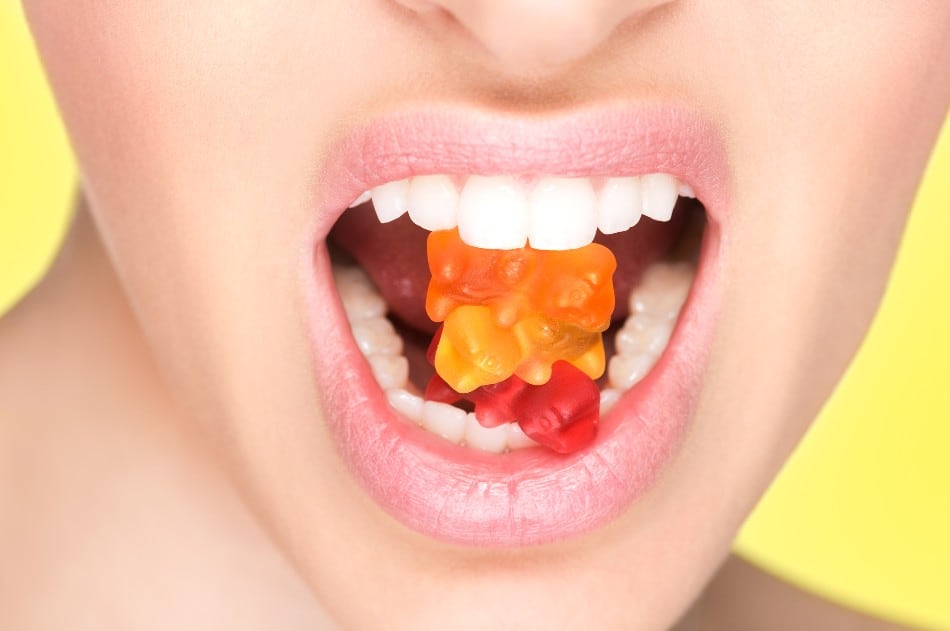As ConfectioneryNews reported, Cargill researchers discovered that generationally, older consumers prefer a softer gummy due to dental considerations. In comparison, younger consumers prefer chewy and sour gummies and textures that include a crunch or pop. Gelatin gummies showed moderate appeal to consumers, described by consumers as hard and taking longer to chew. At the same time, the corn syrup gummy was considered much harder and associated with being waxy and sticky to the teeth.
In Cargill’s study, researchers created six distinct formulations of gummies, ranging from firm to soft, which appeared identical in shape, flavor, and size. Ingredients included gelatin, pectin, carrageenan, and other hydrocolloids, which provide a range of texture profiles. A blind panel of consumers then evaluated and scored their preference for each gummy sample.
Soft gummies
The study showed that softer gummies scored the highest. The study also found that gummies made with pectin, tapioca corn syrup, and starch were the most appealing. Meanwhile, gelatin gummies, which exhibit a chewier texture, and gummies with a dense, waxy, or sticky mouthfeel and texture scored the lowest.
“What we found was that the gummies that were softer, which were made with a combination of pectin and tapioca, pectin and corn syrup, or pectin, starch, and corn syrup…were the ones consumers said they liked more,” explained Courtney LeDrew, marketing manager at Cargill.
After identifying the highest scores, Cargill’s team developed a “texture correspondence analysis,” which LeDrew said helped the team develop “descriptive words associated with gummies” and identify what consumers simultaneously find appealing and what they’re trying to avoid in a gummy.
“The three softer, smooth pectin gummies were described as ‘airy.’ They break down easily when chewing. And through this analysis, those attributes were determined to be more appealing. Customers liked those types of textures in gummies,” LeDrew elaborated.
In the study, LeDrew highlighted that the findings are “helping us understand the language that can be used to describe the different types of textures and what types of textures could potentially be more appealing to consumers."
Gelatin-based gummies are still the most popular in the market – and LeDrew noted that while the top-selling gummies in the US are gelatin-based, which include pectin and corn syrup for a chewier texture, “what’s in the market today would certainly be a bit softer.” This highlights the consumer divide in gummy textures, allowing brands to include more texture variety.
Recent gummy innovations include:
Haribo Berry Clouds gummies feature Blueberry, Wildberry, and Strawberry flavors with “soft & fruity” as a description on the packaging. The pectin and gelatin-based candy is layered with a “cloud-like” center and ultra-soft texture.
Hammond’s Gummi line includes Sour Worms, Gummy Bears, Cola Bites, and Sour Bites, a strawberry flavor with a vanilla cream center. The Cola Bites and Sour Bites included “soft & chewy” verbiage on its packaging.
Bazooka has launched a more interactive candy, Juicy Drop Gummy Dip ‘N’ Stix.’ The packaging describes it as “chewy sticks and sour gel,” where consumers pop open the resealable lid to dip the gummy sticks into the centre of the package filled with sour gel. The brand also extended its Push Pop line to develop Push Pop Gummy Roll as another on-the-go gummy experience. The roll comes in four flavors—strawberry, watermelon, blue raspberry, and berry blast.
Gummies are also popular expansions to existing portfolios. For example, Impact Confections extended its inimitable Warheads line into sour Warheads Wedgies featuring flavors Watermelon Punch, Cherry Limeade, and Pink Lemonade.
Mars featured its Skittles Wildberry Gummies in a shareable pouch, while Hershey’s turned its original lineup of Twizzlers flavors—Peach & Cherry, Grape & Cherry, and Lemonade & Cherry - into gummies shaped like miniature Twizzlers.




